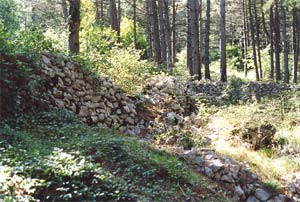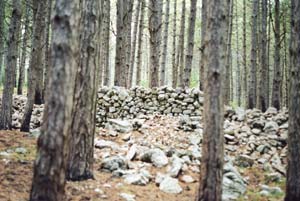![]() Fortifications in samnite
and roman times
Fortifications in samnite
and roman times
Even
before the final Roman conquest, a dense network of fortifications
existed in Samnio (the current Molise), with enclosing walls that
often stretched for kilometres and a concentration of “strong
points” overlooking valleys and thoroughfares from heights that
were naturally protected by the morphological configuration of the
land. The problem of defending the territory has been met, in
every age, with methods, techniques and organisational systems
that depended on the economic conditions of the population, on the
size of the area to be defended and on the peculiarities of the
political situation at the time.
The landscape of Upper Molise is characterised by megalithic
ranges of considerable size located at strategic points in the
territory of the Pentri Samnites. The walled city of Mount Vairano
(Roman Aquilonia?) had a perimeter of 2900 m. and enclosed
an area of 49 hectares. A characteristic element of these
fortifications was represented by the dry walls erected using
blocks of locally quarried stone. Significant fortifications were
erected at the heart of Samnium Pentro, which coincides with the
large area traversed by the Sangro, Volturno, Trigno and Biferno
watercourses. Other fortifications were erected in Duronia,
Chiauci, Carovilli, Campochiaro and Venafro.
These fortifications were arranged so as to be mutually visible,
with intersecting lookouts at intervals of 2500 to 3000 metres.
They constituted a system of interconnected sightings covering
almost the entire territory. In some cases, groups of
fortifications constituted a closed system, capable of protecting
a circumscribed area. The Matese Massif, for example, was
protected by a series of walls arranged in loops on all sides.
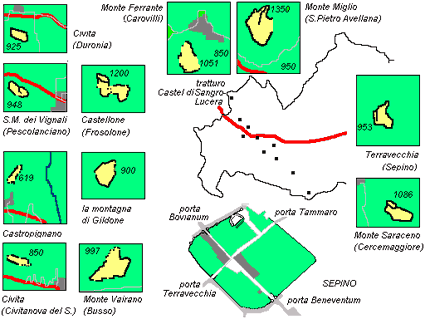 |
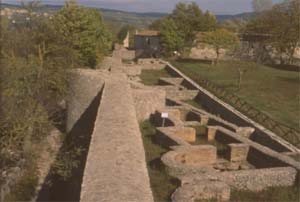 |
Sepino |
|
|
Monte Ferrante |
|
|
Monte Ferrante |
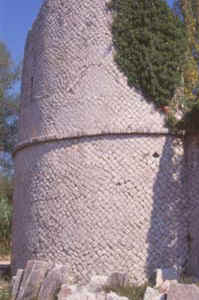 |
Sepino |
